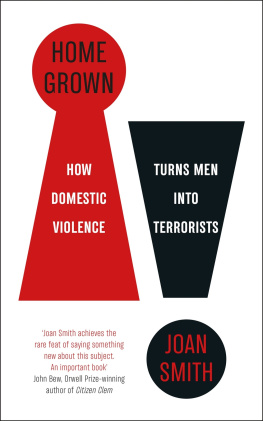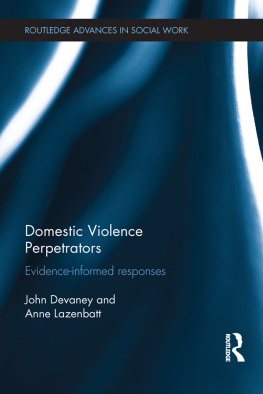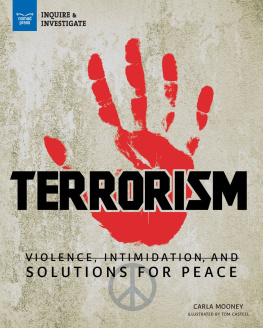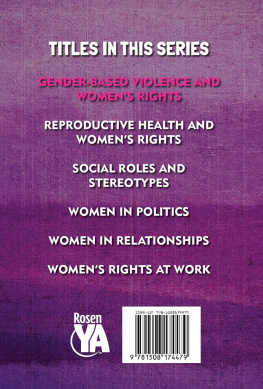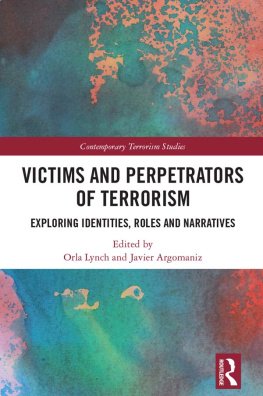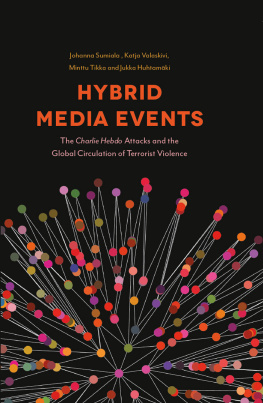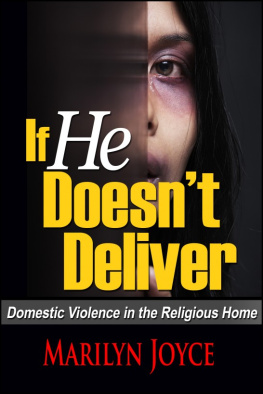Home Grown
HOME GROWN
Also By
Also by Joan Smith
The Loretta Lawson Crime Series
A Masculine Ending
Why Arent They Screaming?
Dont Leave Me This Way
What Men Say
Full Stop
Other Fiction
What Will Survive
In Bed With (contributor), ed. Kathy Lette and others
Femmes de Sicle (ed.)
Non-fiction
Clouds of Deceit: The Deadly Legacy of Britains Bomb Tests
Misogynies
Hungry for You: From Cannibalism to Seduction, a Book of Food
Different for Girls: How Culture Creates Women
Moralities: How to Stop the Abuse of Money and Power in the 21st Century
The Public Woman
Down with the Royals
Title
HOME GROWN
How Domestic Violence Turns Men Into Terrorists
Joan Smith

Copyright
This ebook edition first in 2019 by

An imprint of
Quercus Editions Ltd
Carmelite House
50 Victoria Embankment
London EC4Y 0DZ
An Hachette UK company
Copyright 2019 Joan Smith
The moral right of Joan Smith to be
identified as the author of this work has been
asserted in accordance with the Copyright, Designs and Patents Act, 1988.
All rights reserved. No part of this publication
may be reproduced or transmitted in any form
or by any means, electronic or mechanical,
including photocopy, recording, or any
information storage and retrieval system,
without permission in writing from the publisher.
A CIP catalogue record for this book is available
from the British Library.
Hardback ISBN 978 1 78747 604 2
Trade Paperback ISBN 978 1 78747 605 9
Ebook ISBN 978 1 78747 603 5
Every effort has been made to contact copyright holders.
However, the publishers will be glad to rectify in future editions
any inadvertent omissions brought to their attention.
Quercus Editions Ltd hereby exclude all liability to the extent permitted
by law for any errors or omissions in this book and for any loss, damage
or expense (whether direct or indirect) suffered by a third party relying
on any information contained in this book.
Ebook by CC Book Production
Cover design 2019 Jamie Keenan
www.riverrunbooks.co.uk
About the Author
Joan Smith is a novelist, columnist and human rights activist. She is the author of the feminist classic Misogynies , six novels and a number of polemics, most recently Down with the Royals . She has been co-chair of the Mayor of Londons Violence Against Women and Girls Board since 2013.
Epigraphs
It may seem to some that this pattern of violence [terrorism] is different from violence against women and girls, but we in this place must recognise that the patterns of violent behaviour and the perpetration of violence against women and girls have been seen in the past history of many of those who go on to commit terrorist atrocities.
Jess Phillips, MP for Birmingham Yardley, House of Commons, 8 March 2018
There was research in the 1980s... the number one finding was that the first victim of an extremist or terrorist is the woman in his own home. Weve forgotten that. We havent built on that. Had we recognised them earlier as wife beaters and misogynists, Ive no doubt that violence against women would have been a big flag when you have to decide who to carry out surveillance on.
Nazir Afzal, former Chief Crown Prosecutor for the North-west of England, in conversation with the author, October 2018
Contents
Introduction
Terrorism is the scourge of our age. In Europe alone, in recent years, hundreds of people have been killed in attacks in France, Belgium, Spain, Germany, Sweden, Denmark and Norway. France has been particularly badly hit by a wave of shootings and suicide bombings, losing 130 people in a single night in November 2015, ninety of them at the Bataclan Theatre, where an American band was playing. Australia, Canada and the US have been attacked, along with Morocco, Tunisia, Turkey, Iraq, Iran and Afghanistan.
The UK was targeted in 2017 when the country suffered four fatal terrorist attacks in a three-month period, the first mass killings since fifty-two people were murdered in coordinated suicide bombings on the London transport system in the summer of 2005. Between March and June, people were killed on Westminster Bridge and at the entrance to Parliament, at the Manchester Arena as the audience left an Ariana Grande concert, on London Bridge and outside bars and restaurants in Borough Market, and outside a mosque at Finsbury Park. Three months after that, another terrorist exploded a home-made bomb on a Tube train at Parsons Green, in south London, causing a fireball and injuries but failing to kill anyone. In all, thirty-seven people died in these five attacks and hundreds were injured, many of them having to spend days or weeks in hospital, being treated for burns, stab wounds, crushed limbs or damage done by shrapnel.
But that wasnt the full picture of the terrorist threat to the UK: another nine plots were disrupted by the security services between March and December 2017 and the threat level remains severe, suggesting that another terrorist attack is judged to be highly likely. As well as tracking would-be terrorists based in this country, counterterrorism police and the domestic security service, MI5, have had to deal with British men (and a small number of women) returning from conflict zones in the Middle East following the collapse of the terrorist group calling itself the Islamic State of Iraq and al-Sham (ISIS). Some of these individuals may simply go back to their old lives but others who want to come back, including two members of a notorious ISIS execution and torture squad known as the Beatles, are regarded as highly dangerous. Four hundred British jihadists have already returned, according to a Parliamentary debate in September 2018, but only forty have been prosecuted due to the difficulty of producing evidence of terrorist acts committed in countries where the rule of law had temporarily broken down. Police and MI5 have to keep an eye on all these individuals, whose numbers run into the thousands, and work out which of them pose an imminent threat in the UK. Trying to distinguish between angry young men who express heated anti-Western views and those who will actually plot terrorist attacks is the most urgent task facing the security services, and this book will suggest a new way by understanding the close link between private and public violence that it might be done.
At the same time, local authorities and other public bodies are trying to make bridges, shopping streets and landmarks safer from the kind of vehicle-based attacks that did so much damage in London in 2017. The task of keeping the public safe hasnt been so pressing since the height of the IRA bombing campaign on the mainland in the 1970s and 80s.
Most, but certainly not all, of the recent attacks have been jihadist in origin. In December 2017, a report into three of that years attacks Westminster Bridge, the Manchester Arena and London Bridge offered rare insights into the thinking behind counterterrorism strategy, revealing a wealth of material that hadnt previously been in the public domain. (The Finsbury Park attack was excluded from the report because the perpetrator, Darren Osborne, was still awaiting trial when it was published.) Compiled by David (now Lord) Anderson QC, who had previously been the governments Independent Reviewer of Terrorism Legislation, it was based on an assessment of nine previously classified internal reviews which stretched to 1,150 pages. One of the most revealing sections was a comparison between the perpetrators of the three attacks and 269 individuals responsible for terrorist-related offences in the UK between 1998 and 2015. It was a large pool and revealed some striking common factors, including the fact that all five of the 2017 attackers under consideration were male, like 93 per cent of the larger total. (Female terrorists are not unknown but the overwhelming majority are male, like most of the individuals convicted of violent crimes in this country.)

